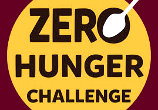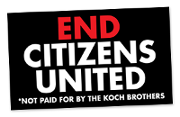Biblio
Filters: First Letter Of Last Name is O [Clear All Filters]
(2007). The New American Workplace.
"In particular, there was growing evidence that if unnecessary job stress could be reduced, workers would suffer fewer heart attacks and strokes.... Moreover, a growing body of data suggested that many mental health problems have their genesis at work, and excessive drug and alcohol use are linked with certain occupations and conditions of employment." (p. 103)
(2007). Action Learning.
"We thus define action learning as follows:
'An approach to working with and developing people that uses work on an actual project or problem as the way to learn. Participants work in small groups to take action to solve their problem and learn how to learn from that action. Often a learning coach works with the group in order to help the members learn how to balance their work with the learning from that work.'" (p. 3)
'An approach to working with and developing people that uses work on an actual project or problem as the way to learn. Participants work in small groups to take action to solve their problem and learn how to learn from that action. Often a learning coach works with the group in order to help the members learn how to balance their work with the learning from that work.'" (p. 3)
(2003). Business Leaders and Success: 55 Top Business Leaders and How They Achieved Greatness.
"Deming's sometimes-gruff nature reflected impatience with managerial abuses of power. He thought that power carried a precious responsibility. 'Research shows', Deming said, 'that the climate of an organization influences an individual's contribution far more than the individual himself.' " (p. 206)
(2003). Career Warfare: 10 Rules for Building a Successful Personal Brand and Fighting to Keep It.
"Organizations that value you only for your business skills—a lot of Wall Street firms fall into this category—are very antiseptic. They tend to be built on addictions, but not loyalties: addictions to the money, addictions to the process. They are a bit like galley ships. The overseers don't care about the relationship. They just want you to keep rowing.
This is fine when times are good, but if you should ever fail to handle your oar well, you are overboard. Such firms will have no compunction about firing you and even ruining your reputation, if it serves their purpose." (p. 54)
(1999). Jini? Specifications, The.
(1997). Java threads.
(1995). Wellness 9 to 5: Managing Stress at Work.
"My encounter with job stress is part of an epidemic. In the United States, over 75 percent of all visits to primary care physicians are to treat stress-related complaints, and the vast majority of these complaints are job-related (Wallace, 1992). Work site stress can kill the very spirit of who we are as individuals. Our dreams, aspirations, creative goals, and hopes to 'make a difference' wither and die if the stress of daily work obscures our capabilities." (p. 5)
(1995). Linux Network Administrator's Guide.
(1994). Enlightened Leadership : Getting to the Heart of Change.
"When playing the corporate game of seeing who acquires more power, who is most right, who has the best ideas, and who is going to look the best, we become reluctant to take the risk of having people do anything outside of our direct control. Therefore, we become hesitant to delegate responsibility, and stifle the creativity and effectiveness of our people. We also become less likely to take risks ourselves and tend to rely on the perceived safety of the 'way we've always done it around here.' We seek the comfort of the established methods, policies, and procedures. We lock ourselves in our own boxes." (p. 218)
(1991). Driving Fear Out of the Workplace: How to Overcome the Invisible Barriers to Quality, Productivity, and Innovation.
"W. Edwards Deming tells those who attend his seminars, 'We are here to make another kind of world.' He expresses the broad scope of the goal, and its enormity....
To achieve another kind of world requires a deep understanding of where we are now. The awareness of fear can help us move to this point. In the same way that many organizations have had to face harsh news about waste, scrap, and rework within their production processes, there is also harsh news about fear in human interactions in the workplace. But once past the denial that is so common, the real possibilities begin to emerge. When managers accept the role of facilitator, coach, and consultant, a dramatic shift takes place. Traditional notions of controlling and telling give way to inviting and guiding. Commitment switches to the long term—to the development of quality products and services, to long-lasting, mutually satisfying relationships with customers, vendors, and employees." (p. 240)
To achieve another kind of world requires a deep understanding of where we are now. The awareness of fear can help us move to this point. In the same way that many organizations have had to face harsh news about waste, scrap, and rework within their production processes, there is also harsh news about fear in human interactions in the workplace. But once past the denial that is so common, the real possibilities begin to emerge. When managers accept the role of facilitator, coach, and consultant, a dramatic shift takes place. Traditional notions of controlling and telling give way to inviting and guiding. Commitment switches to the long term—to the development of quality products and services, to long-lasting, mutually satisfying relationships with customers, vendors, and employees." (p. 240)
(1990). A whack on the side of the head: how you can be more creative.
"If you think you're creative, then you'll put yourself in situations where you can use your creativity, where you can take a few risks and try some new approaches, and where you come up with new ideas." (p. 166)
(1990). Leadership Is an Art.
"Leadership is not an easy subject to explain. A friend of mine characterizes leaders simply like this: 'Leaders don't inflict pain; they bear pain.'" (p. 11)
(1990). Self Directed Work Teams: The New American Challenge.
"The most potentially damaging kind of performance feedback at this stage is one-on-one feedback from manager to team member. Because that relationship carries so much emotional baggage...it's important to find alternatives to manager-to-employee feedback wherever possible." (p. 135)
(1990). Animal farm : a fairy story.
(1981). Theory Z: How American Business Can Meet the Japanese Challenge.
"A Japanese company committed to lifetime employment will go to great lengths to build loyalty among its employees by ensuring fair and humane treatment. In the United States, by comparison, an alienated, disgruntled employee can be laid off during the next downsizing in the business cycle and thus represents only a short-term burden to the employer. The problem is purely one of incentives. People committed to long-term relationships with one another have strong commitments to behave responsibly and equitably towards one another." (p. 34)
(C)2014 CC-BY-NC 3.0, workcreatively.org











 ]
]